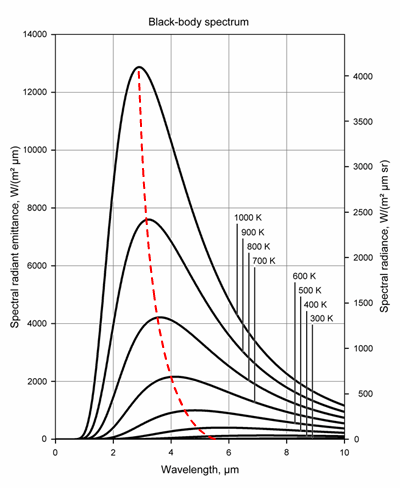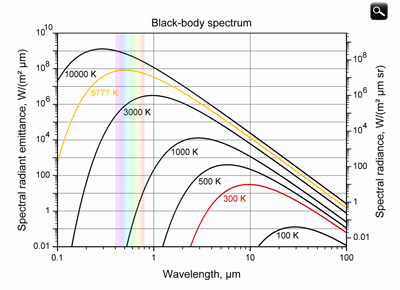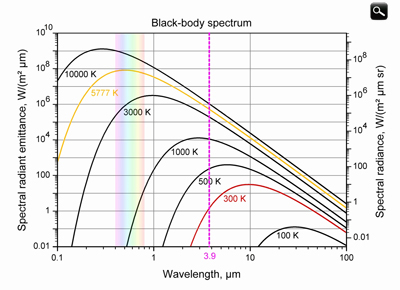Wiens' Law
Plancks' law was an attempt to improve upon an expression proposed by Wilhelm Wien (Wien's law) which fit the experimental data at long wavelengths but deviated from it at short wavelengths.
Wiens' displacement law states that there is an inverse relationship between the wavelength of the peak of the emission of a black body and its temperature (Fig. 5.3).

To summarize, Wiens' displacement law shows that the hotter an object is, the shorter the wavelength at which it will emit most of its radiation.
The sun is a reasonably good approximation of a black body with a temperature of 5777 K. Using Wien's law, this temperature corresponds to a peak emission at a wavelength of 0.5 μm (visible region of the spectrum). On the other hand, many parts of the Earth's surface may be considered a black body at temperatures of 280 K, for which the maximum spectral radiance occurs at a wavelength of 10.35 μm, corresponding to the thermal infrared region of the spectrum.

Figure 5.4 shows the Planck curve for black bodies at 5777 K and 300 K (close to the Sun and Earth's "black body" temperatures).
Due to the huge disparity between the radiation and wavelength ranges occuring at temperature values of 6000 K and 300 K, logarithmic scales are more appropriate for depicting the two curves shown.

If you look carefully at Figure 5.5 you will get a hint as to why the channel 3.9 μm onboard Meteosat Second Generation is suitable for detecting and monitoring forest fires.
The dashed line represents the 3.9 μm band and you see from Wien's law that 3.9 μm is the wavelength at which a blackbody at 743 K has its peak. Obviously, this temperature corresponds to the temperature of a fire!
This is one reason why the IR3.9 channel is suitable for detecting and monitoring forest fires, but there are more reasons.